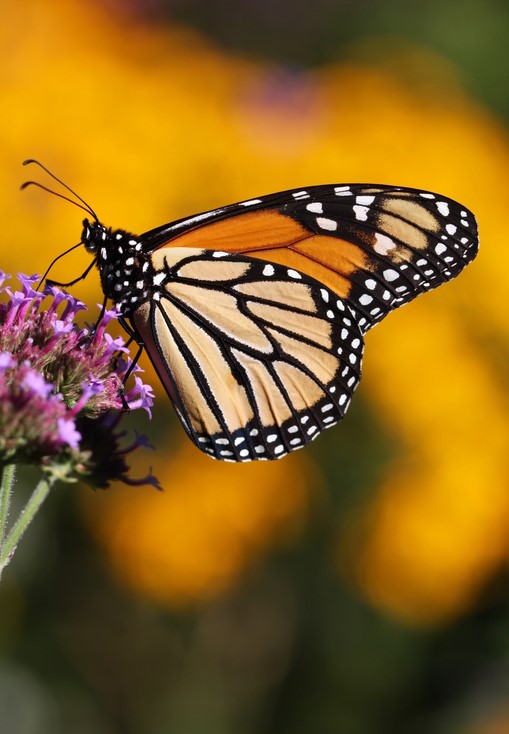by Sheila Dunning, Courtesy of UF IFAS Extension
In the fall of the year, North American monarch butterflies travel from their summer breeding grounds to overwintering location. Those from east of the Rocky Mountains, travel up to an astonishing 3,000 miles to central Mexico. Unlike summer generations that only live for two to six weeks as adults, Eastern monarch adults emerging after about mid-August can live up to nine months. They enter reproductive diapause and begin migrating south in response to decreasing day length and temperatures. This generation has never seen the overwintering grounds before.

As the Monarch butterflies migrate through the Panhandle, saltbush (Baccharis halimifolia), is a must visit. Their tiny, white to greenish blooms and “fuzzy-looking” fruit come into flower and are attractive at a time when few other small trees and shrubs are flowering, bring this rarely-noticed native plant into view in the fall landscape.
Saltbush is an oval to rounded, freely branched, multi-stemmed, hardy, semi-evergreen to deciduous, cold-tolerant shrub usually not exceeding about 12 feet in height. Its leaves are 1-3 inches long and about 1 1/2 inches wide, often deeply toothed, and shiny to grayish green. No serious pests are normally seen on the plant. Also referred to as Groundsel, it is native to coastal and interior wetlands throughout Florida, often seen in its native habitat with Wax Myrtle, Buttonbush and Marsh Elder.
